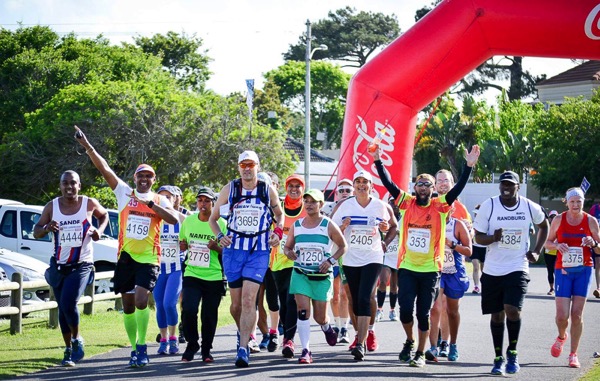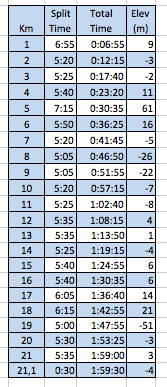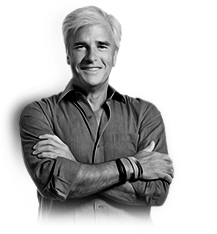
A year ago I started paceseting for races in Cape Town. My first race was the UCT 10k. I drove a (somewhat empty) 60 minute bus, and arrived in 59:10. Over the past year I have been a pacesetter for 20 races with a total distance of 704km (ok so I love numbers; I freely admit it). Even though it has only been a year, pacesetting has taught me both about running in a bus, and about running in general, and now my busses are a lot more full. Here are a few tips. I hope they help.
When running in a bus
Know the plan
Most pacesetters post their race plan on the WP pacesetters group a day or two before the race. If you are planning on running in a bus look out for their plan, or ask the pacesetter when you see him or her on the run. Most pacesetters have a different strategy for the race. For example for a longer race I like to do a run/walk strategy right from the start, but some pacesetters prefer to run the first half and then follow a run/walk strategy. Both are valid, just different. If they approach a race different to your style, join a different bus or do you own thing. And if you’re on a bus and it’s not workout out for you, rather leave the bus.
Don’t stick too close to the pacesetter
Yes I know you want to run with the pacesetter and you don’t want to get left behind, but please not too close. I have almost been tripped by people running directly behind me. I have had people rubbing shoulders with me for long stretches (literally rubbing shoulders). Just a little breathing room makes it a little easier.
Offer to help
When you pass a water table (especially in a big bus), grab a few waters and pass them to the people on the inside. If the bus drives asks for water, offer to grab it.
Pacesetters are human
None of us get paid to be a pacesetter. We do it for the love of the sport and to give something back. Sometimes we mess up, and somethings things just happen. Some examples:
- On Cape Town marathon without any warning I cramped at the 40k mark, so I limped in to the finish, but thankfully my co-driver Buks brought the bus in spot on time (the only time I have missed my target).
- I’ve had a marshal on a 15km race send the runners on the wrong route. This made the course about 1k too long with a 2km uphill to the finish that was meant to be a 2km downhill to the finish.
- I’ve had a 10km race that was only 9km. On that one my 60min bus came in at 53 minutes which (relatively speaking) was spot on time. If we mess up, move along and enjoy the next race. We are doing our best.
Have fun
The bus is a little running community. Have fun. If you bus is singing songs, sing along. If they’re chatting, join in. The camaraderie is what makes the miles go by so fast when you’re on a bus.
On running
Here are some things that I focus on as a pacesetter, but they also help me when I’m running for my own goals.
Have a plan
 The first time I was a pacesetter my plan was to just run and come in on time (in short I was winging it). I did, but as I mentioned above, with a mostly empty bus. That is because the UCT route is quite hilly, and winging it wasn’t good enough. Some things to think about in your plan are going slower on the uphill, speeding up on the downhill (how much?), taking into account that you will be more tired towards the end, noting that your GPS watch won’t match exactly to the km boards and making provision for walk breaks. A pacing chart makes a huge difference (now whenever I race I have a chart of my planned splits per km). In Cape Town we are lucky, because one of the pacesetters, Rassie, is a wizard at creating excellent pace charts. On the right is an example of one of his charts (he usually posts charts for the bigger races in the WP pacesetters group).
The first time I was a pacesetter my plan was to just run and come in on time (in short I was winging it). I did, but as I mentioned above, with a mostly empty bus. That is because the UCT route is quite hilly, and winging it wasn’t good enough. Some things to think about in your plan are going slower on the uphill, speeding up on the downhill (how much?), taking into account that you will be more tired towards the end, noting that your GPS watch won’t match exactly to the km boards and making provision for walk breaks. A pacing chart makes a huge difference (now whenever I race I have a chart of my planned splits per km). In Cape Town we are lucky, because one of the pacesetters, Rassie, is a wizard at creating excellent pace charts. On the right is an example of one of his charts (he usually posts charts for the bigger races in the WP pacesetters group).
Now I always run with a pacing chart, even when I am not formally pacesetting. But you still need to work hard on the day to stay on track.
But be flexible
At the Milkwood 21k, the wind was howling. There was a long 5k uphill into the wind in the second half. So I had to on the fly consider how I was going to account for that while keeping the folk in my 2 hour bus on time. My solution was to push a little harder in the first half to get some extra time for more walk breaks into that wind. The bus came in spot on time. If you’re running behind how are you going to catch up? If you’ ahead are you going too fast, or are you ok to bank that for slightly longer walk breaks later on? Is the wind howling in one direction?
Make time to walk
I am convinced that plenty of walk breaks makes for a faster run. Both my marathon and 2 Oceans Ultra marathon personal best were achieved with plenty of walk breaks (starting at the first water table).
Know the route
If you know the route, you know the scary steep hills, the long downhills, and great smooth sections where you can cruise. That makes it easier to both plan your walks on the steep bits (you loose less time), and it helps to know what’s coming up. On West Coast Marathon there is a really steep hill just before the end, but it helps hugely to know that it is only 600m long! Ideally you will have at least driven the route, but if you can’t (I’m running Athens in Greece in November and I won’t have a car), you can still study the route, and look at Strava profiles from other athletes’ previous runs.
(and again) have fun
Yes we love to chase our own goals and to get a PB. But ultimately we are there to enjoy the atmosphere on the route, to experience the camaraderie of our fellow runners, and the amazing crowd support. But if you’re not having fun, you are missing out.
And finally thanks to everybody that runs with me, without you I wouldn’t have a bus, and a huge thanks to Paul and the amazing guys in WP Pacesetters that have taught me so much about running and pacesetting!
See you on the road. My next races are Slave Route, and CT12 – look out for my flag there!







 The first time I was a pacesetter my plan was to just run and come in on time (in short I was winging it). I did, but as I mentioned above, with a mostly empty bus. That is because the UCT route is quite hilly, and winging it wasn’t good enough. Some things to think about in your plan are going slower on the uphill, speeding up on the downhill (how much?), taking into account that you will be more tired towards the end, noting that your GPS watch won’t match exactly to the km boards and making provision for walk breaks. A pacing chart makes a huge difference (now whenever I race I have a chart of my planned splits per km). In Cape Town we are lucky, because one of the pacesetters, Rassie, is a wizard at creating excellent pace charts. On the right is an example of one of his charts (he usually posts charts for the bigger races in the
The first time I was a pacesetter my plan was to just run and come in on time (in short I was winging it). I did, but as I mentioned above, with a mostly empty bus. That is because the UCT route is quite hilly, and winging it wasn’t good enough. Some things to think about in your plan are going slower on the uphill, speeding up on the downhill (how much?), taking into account that you will be more tired towards the end, noting that your GPS watch won’t match exactly to the km boards and making provision for walk breaks. A pacing chart makes a huge difference (now whenever I race I have a chart of my planned splits per km). In Cape Town we are lucky, because one of the pacesetters, Rassie, is a wizard at creating excellent pace charts. On the right is an example of one of his charts (he usually posts charts for the bigger races in the 
 Haruki Murakami is best known as the author of “Norwegian Wood”, and the “The Wind-Up Bird Chronicle” – and many other books. If you haven’t read his books I highly recommend you check them out. But recently I discovered that he is a long-distance runner as well and has written about his running.
Haruki Murakami is best known as the author of “Norwegian Wood”, and the “The Wind-Up Bird Chronicle” – and many other books. If you haven’t read his books I highly recommend you check them out. But recently I discovered that he is a long-distance runner as well and has written about his running. Would you use a soap containing drain cleaner as a key ingredient?
Would you use a soap containing drain cleaner as a key ingredient?